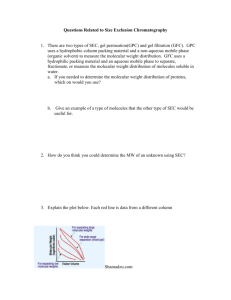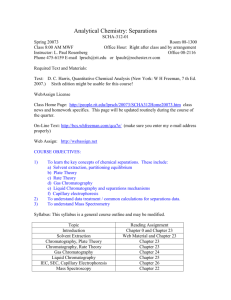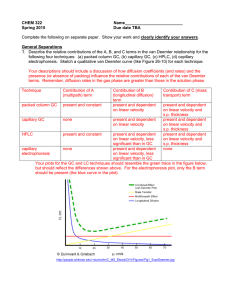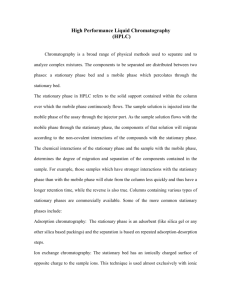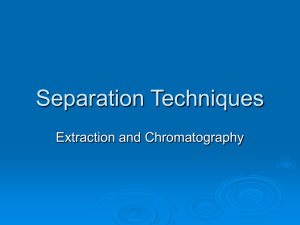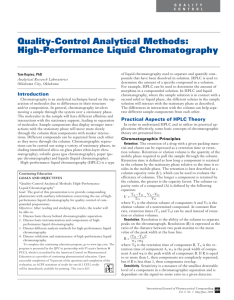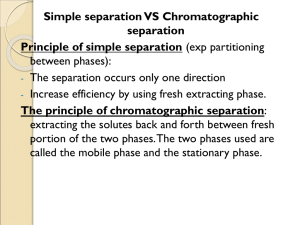SUMMARY
advertisement
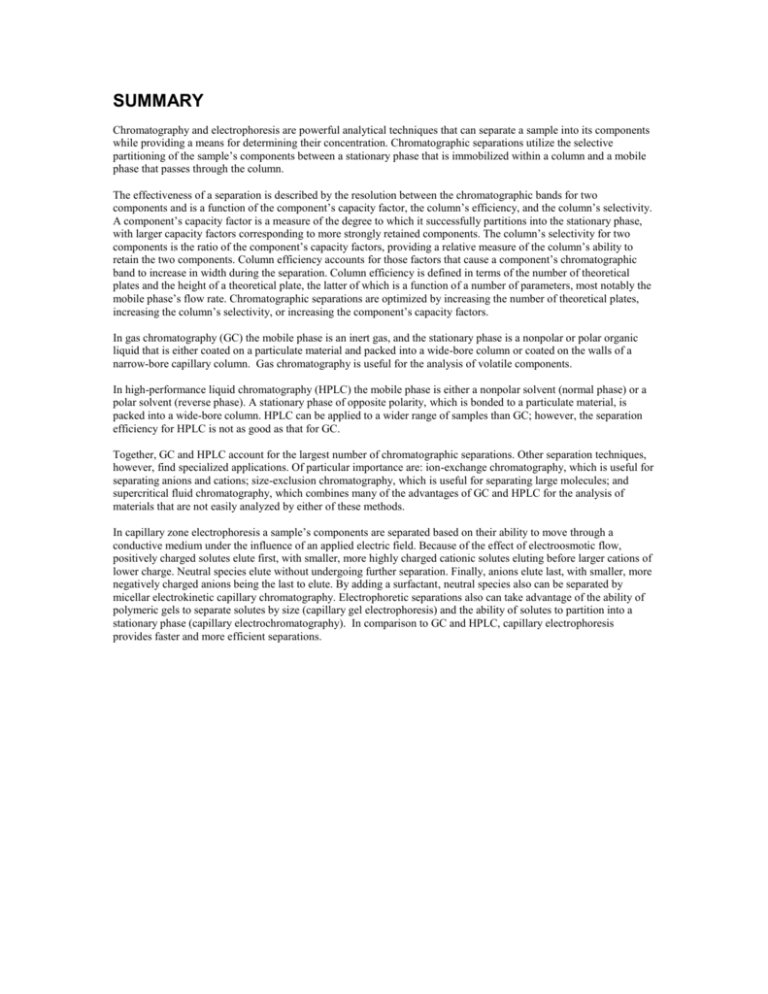
SUMMARY Chromatography and electrophoresis are powerful analytical techniques that can separate a sample into its components while providing a means for determining their concentration. Chromatographic separations utilize the selective partitioning of the sample’s components between a stationary phase that is immobilized within a column and a mobile phase that passes through the column. The effectiveness of a separation is described by the resolution between the chromatographic bands for two components and is a function of the component’s capacity factor, the column’s efficiency, and the column’s selectivity. A component’s capacity factor is a measure of the degree to which it successfully partitions into the stationary phase, with larger capacity factors corresponding to more strongly retained components. The column’s selectivity for two components is the ratio of the component’s capacity factors, providing a relative measure of the column’s ability to retain the two components. Column efficiency accounts for those factors that cause a component’s chromatographic band to increase in width during the separation. Column efficiency is defined in terms of the number of theoretical plates and the height of a theoretical plate, the latter of which is a function of a number of parameters, most notably the mobile phase’s flow rate. Chromatographic separations are optimized by increasing the number of theoretical plates, increasing the column’s selectivity, or increasing the component’s capacity factors. In gas chromatography (GC) the mobile phase is an inert gas, and the stationary phase is a nonpolar or polar organic liquid that is either coated on a particulate material and packed into a wide-bore column or coated on the walls of a narrow-bore capillary column. Gas chromatography is useful for the analysis of volatile components. In high-performance liquid chromatography (HPLC) the mobile phase is either a nonpolar solvent (normal phase) or a polar solvent (reverse phase). A stationary phase of opposite polarity, which is bonded to a particulate material, is packed into a wide-bore column. HPLC can be applied to a wider range of samples than GC; however, the separation efficiency for HPLC is not as good as that for GC. Together, GC and HPLC account for the largest number of chromatographic separations. Other separation techniques, however, find specialized applications. Of particular importance are: ion-exchange chromatography, which is useful for separating anions and cations; size-exclusion chromatography, which is useful for separating large molecules; and supercritical fluid chromatography, which combines many of the advantages of GC and HPLC for the analysis of materials that are not easily analyzed by either of these methods. In capillary zone electrophoresis a sample’s components are separated based on their ability to move through a conductive medium under the influence of an applied electric field. Because of the effect of electroosmotic flow, positively charged solutes elute first, with smaller, more highly charged cationic solutes eluting before larger cations of lower charge. Neutral species elute without undergoing further separation. Finally, anions elute last, with smaller, more negatively charged anions being the last to elute. By adding a surfactant, neutral species also can be separated by micellar electrokinetic capillary chromatography. Electrophoretic separations also can take advantage of the ability of polymeric gels to separate solutes by size (capillary gel electrophoresis) and the ability of solutes to partition into a stationary phase (capillary electrochromatography). In comparison to GC and HPLC, capillary electrophoresis provides faster and more efficient separations.


